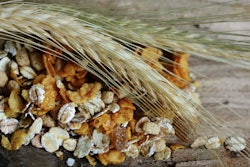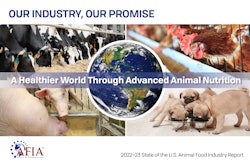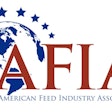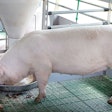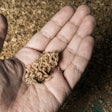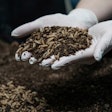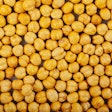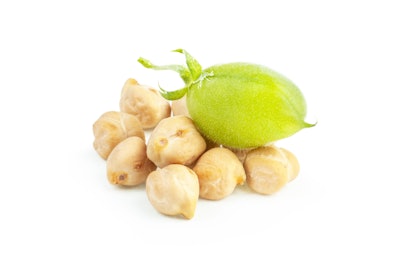
Thechickpea, a nutrient-rich legume, has gained popularity as an ingredient in animal feeds due to its high protein content and other essential nutrients. Chickpeas are also considered to be locally more sustainable and even more economical compared to imported protein sources. However, like many plant-based ingredients, chickpeas contain certain anti-nutritional factors that can hinder their nutritional value for animals. In this article, we will explore these anti-nutritional factors and delve into effective methods to neutralize them, making chickpeas a more valuable component of animal diets.
Understanding anti-nutritional factors in chickpeas
Anti-nutritional factors are naturally occurring compounds found in various plant-based feeds that interfere with the digestion and utilization of nutrients by animals. Chickpeas, like other legumes, contain several of these factors, including:
- Phytic acid:也重新ferred to as phytate, phytic acid binds essential minerals such as calcium, zinc and iron, rendering them unavailable for absorption by the animal’s digestive system. Here, phosphorus is most important as it remains the third most expensive nutrient in any farm animal feed.
- Tannins:Tannins are polyphenolic compounds that can inhibit protein digestion and reduce nutrient absorption in the gastrointestinal tract. Here, we refer only to condensed tannins, as not all tannins are considered undesirable. In fact, many tannins have strong antioxidant properties.
- Protease inhibitors:除了丹宁酸沉淀蛋白质,别致kpeas contain other protease inhibitors, which can interfere with the activity of digestive enzymes. As in most legumes, these include well-known compounds like trypsin and chymotrypsin.
- Oligosaccharides:These complex carbohydrates can cause flatulence and digestive discomfort in animals, leading to reduced feed efficiency, but only when chickpeas inclusion rate is excessive. Otherwise, these nutrients can have a beneficial prebiotic effect.
Neutralizing anti-nutritional factors
To harness the full nutritional benefits of chickpeas in animal feeds, it is crucial to neutralize or reduce the impact of the above anti-nutritional factors. Here are effective methods to accomplish this:
- Heat treatment:Heat treatment methods such as roasting, boiling or extrusion can significantly reduce the levels of anti-nutritional factors in chickpeas. These processes break down phytic acid and protease inhibitors, improving mineral bioavailability and protein digestibility. However, this is needed only when chickpeas are the main protein source.
- Fermentation:Fermenting chickpeas with beneficial microorganisms such as lactic acid bacteria can reduce tannin levels and oligosaccharides while improving nutrient digestibility. Fermentation also enhances the palatability of chickpeas. Such methods can be employed at existing liquid feeding systems for swine. At the moment, fermented chickpeas in dry form are not commercially available.
- Enzyme supplementation:Enzyme supplements containing phytases and proteases can be added to animal feeds that include chickpeas. These enzymes help break down phytic acid and protease inhibitors, improving nutrient utilization. However, when using chickpeas, it is important to ensure with the supplier that their enzymes are effective against these anti-nutritional factors in chickpeas, as most research is conducted with more conventional ingredients.
- Blending with other feed raw materials:Combining chickpeas with other feed ingredients, such as grains or oilseeds, can help dilute the impact of anti-nutritional factors and create a more balanced and nutritious diet for animals. In essence, we describe here the practice of limiting the inclusion of chickpeas and combining them with other protein sources.
- Breeding for reduced anti-nutritional factors:It is possible with research and breeding programs to develop chickpea varieties with lower levels of anti-nutritional factors. These efforts can provide a long-term solution to the problem. Similar programs have brought other ingredients from obscurity to the highlight of the animal nutrition industry.
Conclusion
Chickpeas can be a more valuable ingredient in animal feeds than they are today as they offer a high-protein alternative to traditional feed proteins, something that can become locally significant due to economic and other reasons.
While chickpeas, like all legumes, contain certain anti-nutritional factors that can hinder nutrient absorption, these factors can be effectively neutralized through various processing methods. By adopting these techniques, we can harness the nutritional benefits of chickpeas for animals, promoting sustainable and healthy livestock production.
We need ongoing research and innovation in this field to continue increasing the use of chickpeas in animal feeds, making them an increasingly important component of modern animal nutrition.






